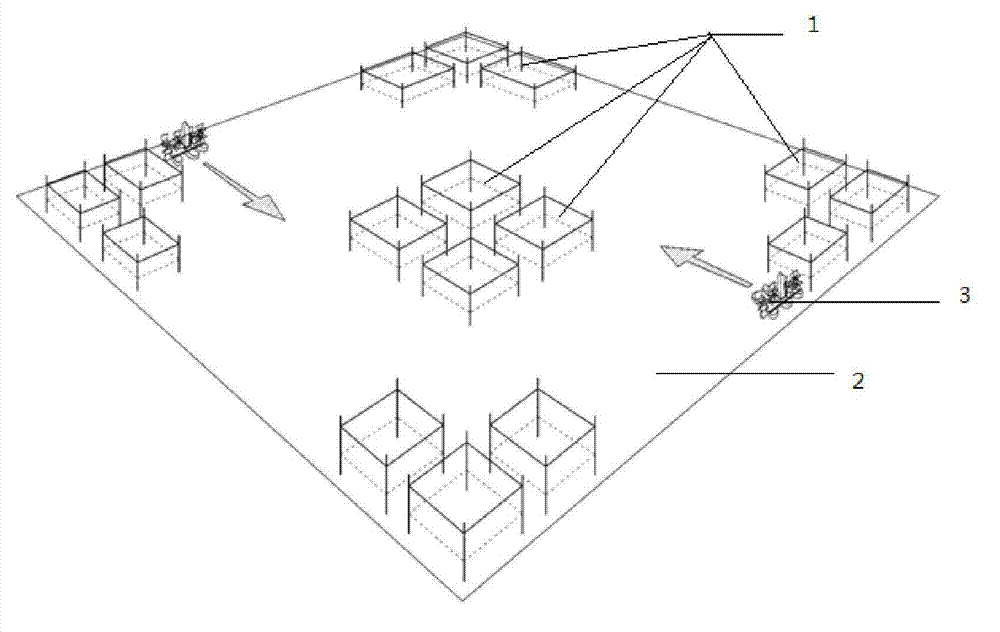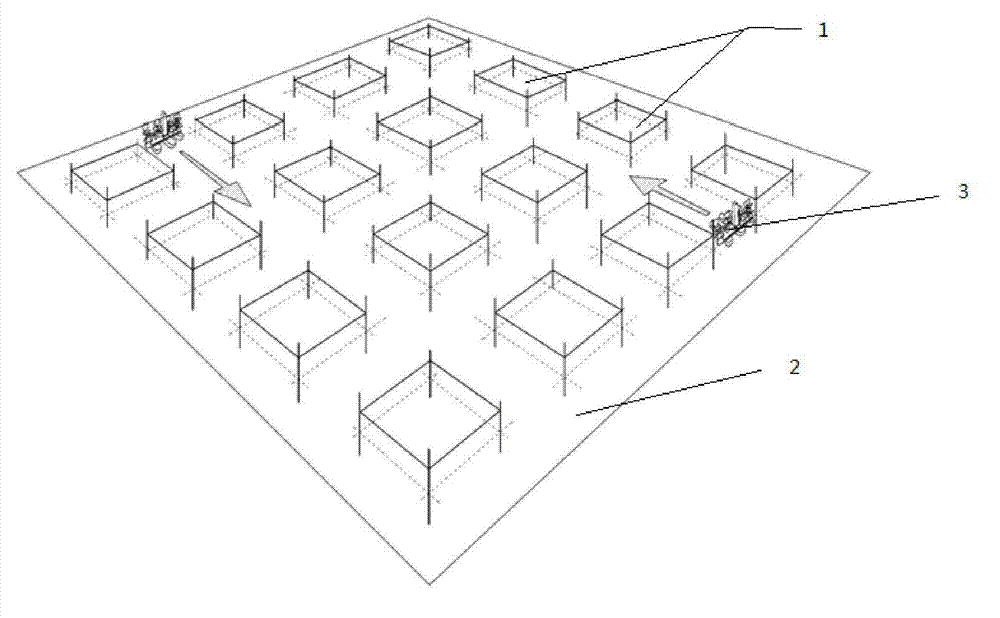Method for ecologically poly-culturing fishes with different feeding habits in net cages of shrimp culture pond
A technology for shrimp and fish, applied in the field of fish and shrimp polyculture, can solve the problems of affecting shrimp feeding, growth and economic benefits, the situation of late winter shed shrimp culture is not optimistic, and the culture has not improved significantly, so as to avoid breeding risks. , the effect of reducing aquaculture emissions, avoiding residual food and bait competition
- Summary
- Abstract
- Description
- Claims
- Application Information
AI Technical Summary
Problems solved by technology
Method used
Image
Examples
Embodiment 1
[0022] Select six experimental ponds, three experimental ponds and three contrast ponds, and three experimental ponds are provided with several net cages of 2 × 2 × 2 meter specifications. The setting method is as follows: figure 1 Shown in, four net cages 1 are set in the central waters of pond 2, three net cages 1 are respectively set at four corners of pond 2, and two aerators 3 are also arranged on the edge of pond 2, and the pond water is subjected to The promotion of the aerator 3 rotates and flows along a certain direction, so that the pool water flows toward the center of the pond.
[0023] The average water depth of each experimental pond is 1.5m, and the area is about 5 mu. Before the pond is released into the water, the pond is plowed and exposed to the sun. When entering the water, it is filtered with a 60-80 mesh screen to prevent wild fish from entering. The water is 60-80cm long, and 10-15kg of crushed tea seed cake is used per mu to directly Sprinkle it, or sp...
Embodiment 2
[0028] Six ponds were selected for the experiment, three each for the test pond and three for the control pond, and 16 net cages with a size of 2 × 2 × 2 meters were set in the three test ponds, and the setting method was as follows: figure 1 shown in . Each pond has an average water depth of 1.5m and an area of about 5 mu.
[0029]Before the pond is released, the ponds are closed and sun-dried until cracked, and then the residual bait, sundries and silt are moved to the outside of the embankment, and then the bottom of the pond is plowed and exposed to the sun. When entering the water, use a 60-80 mesh screen to prevent wild fish from entering. The water intake is 60-80cm, and 10-15kg of crushed tea seed cakes are used per mu to directly spread it, or soak it for several hours and then mix it with slag and water. Splash clear pond. Disinfect the shrimp pond with 8kg of bleaching powder per mu about 15 days before releasing the shrimp seedlings, and then apply 100-150kg of...
Embodiment 3
[0035] Choose six experimental ponds, three contrast ponds and three experimental ponds, wherein each experimental pond is evenly equipped with 24 net cages of 4 × 4 × 2 meter specifications, and the setting method is as follows: figure 2 As shown, 24 net cages 1 are evenly set in pond 2, and aerator 3 is also provided with two pairs of side edges of pond 2.
[0036] The average water depth of each pond is 1.5m, and the area is about 5 mu. The ponds are cleaned, plowed and exposed to the sun before the water is released. Before the seedlings are stocked, 200kg of quicklime per mu is used to disinfect the whole pond, and the water is filtered with a 60-80 mesh screen to prevent wild miscellaneous fish from entering. Sprinkle 10-15kg crushed tea seed cakes per mu directly, or sprinkle the slag with water in the clear pond after soaking for several hours. Disinfect the water body of the shrimp pond with 8kg of bleaching powder per mu about 15 days before releasing the shrimp se...
PUM
 Login to View More
Login to View More Abstract
Description
Claims
Application Information
 Login to View More
Login to View More - Generate Ideas
- Intellectual Property
- Life Sciences
- Materials
- Tech Scout
- Unparalleled Data Quality
- Higher Quality Content
- 60% Fewer Hallucinations
Browse by: Latest US Patents, China's latest patents, Technical Efficacy Thesaurus, Application Domain, Technology Topic, Popular Technical Reports.
© 2025 PatSnap. All rights reserved.Legal|Privacy policy|Modern Slavery Act Transparency Statement|Sitemap|About US| Contact US: help@patsnap.com


